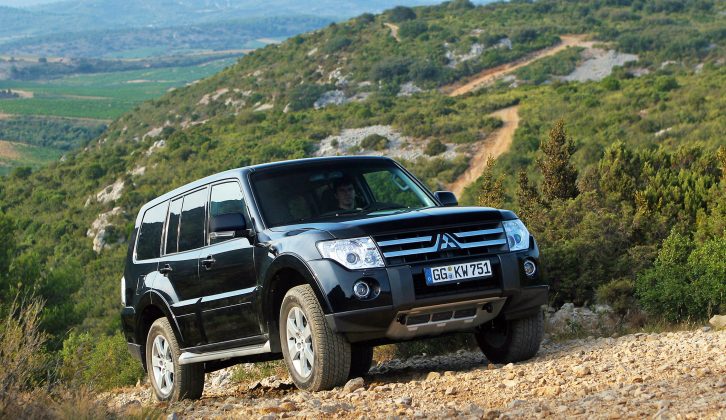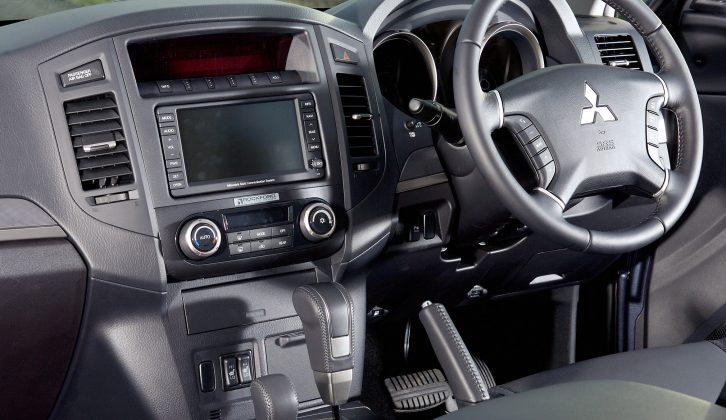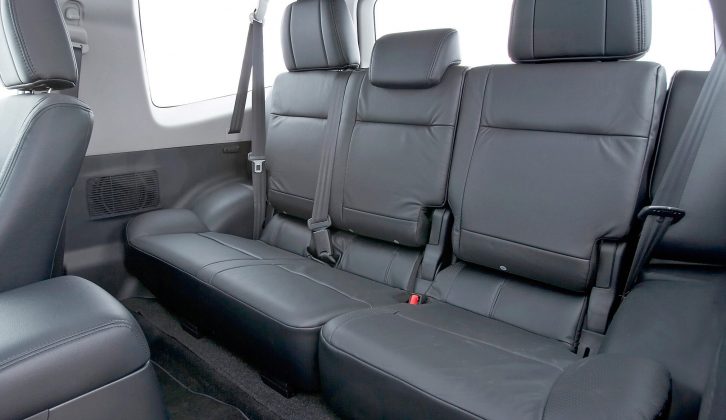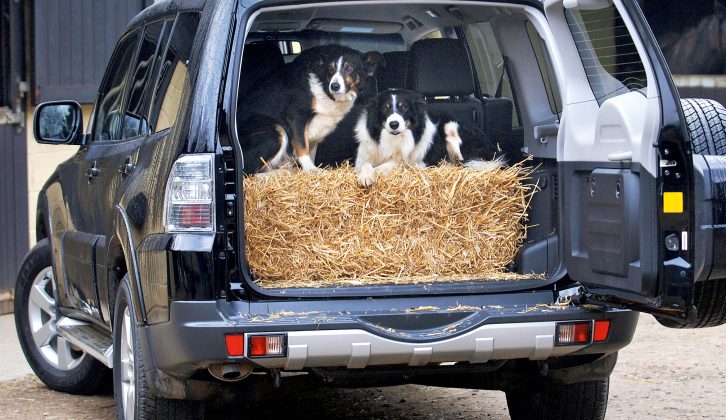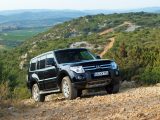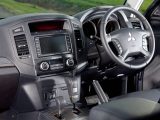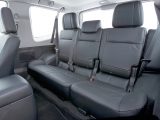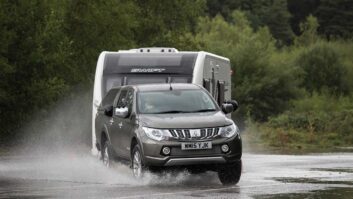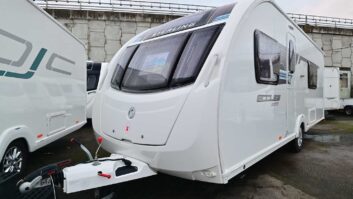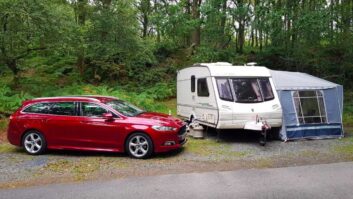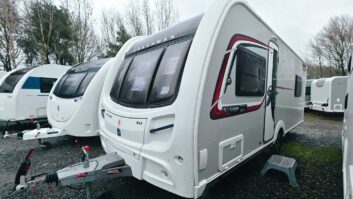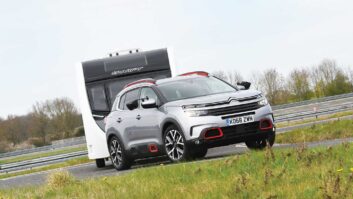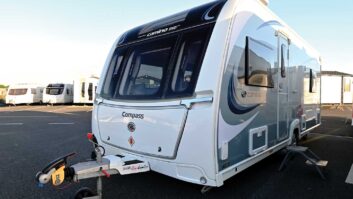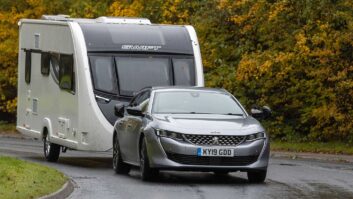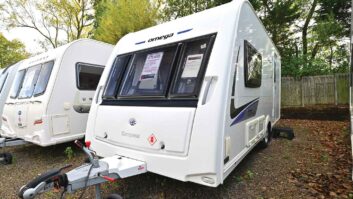Back in 2009, we heaped plenty of praise on the third-generation Mitsubishi Shogun and its Pajero import brethren (that’s what the Shogun is known as in Japan and elsewhere). Now we’re back to look at its replacement, the heavily revised model introduced in March 2007 in both three- and five-door form.
And for once, the news is all good. The new Shogun is better looking, more efficient and more safe, yet retains all the won’t-leave-you-stranded ruggedness that had made it so popular in the first place. It is a serious off-roader.
What it lacks, however, despite all the kit on board, is any great refinement. This is no Land Rover Discovery – but on balance, with a Shogun you’re less likely to be on first-name terms with your local 4×4 specialist. There’s also a bit of rock and roll to the handling, and ponderous steering but, because we’re looking to camp near Silverstone rather than go around the track, that shouldn’t be much of an issue.
Model history
For this fourth generation (2007-2012), Shogun dropped the petrol engine option, at least for the UK market. The only engine offered was a revised version of Mitsubishi’s 3.2-litre four-cylinder diesel, cleaned up a little and using common-rail technology.
With manual Shoguns, this had the same 158bhp as before, with a fairly industrial 281lb ft of torque. To counter transmission power losses, those with an automatic gearbox got an extra 10bhp, but slightly less torque at 275lb ft.
Both gearboxes on offer were five-speeds, although the automatic proved the most popular with UK buyers – around four out of five Shoguns were sold with them. The rest of the transmission, in true off-road style, boasts a centre differential lock and low-range transfer box, so you’ll never get bogged down on site, no matter how much it rains.
The only downside of the diesel engine was its emissions: 280g/km of CO2. So the 3.2 Di-D unit was reworked again and, from March 2010, both manual and automatic models got a new 197bhp/325lb ft version of the engine that somehow pumped out 23% less CO2, lowering road tax. This is clearly the model to have, if your budget runs to it.
This is a market with expectations, so even the base Equippe model has electronic climate control, stability control, six airbags, metallic paint, 17in alloy wheels and a CD/MP3 radio. Warrior upgrades you to a leather steering wheel and seats – electrically adjustable up front – 18in alloys, cruise control, a rear-view camera and privacy glass.
Elegance adds separate rear air conditioning, an electric sunroof, a high-end stereo, rear parking sensors and xenon headlamps, but takes away the privacy glass. Diamond gives that back and adds 20in alloys, a unique grille and attractively bling chrome trim.
Trouble spots
Correct servicing is vital to avert problems and extend the life of a Mitsubishi Shogun, so check the service history thoroughly – not just the stamps in the service book, but the accompanying bills, too. If there aren’t any, think seriously about looking at another car. The servicing doesn’t have to be by Mitsubishi, because there are plenty of specialists and reputable garages capable of looking after them.
Part of that servicing regime should involve inspecting the nylon cam-chain top guide, and replacing it at timely intervals. It’s only a £10 part, but one that mustn’t be neglected. They tend to last 70,000-90,000 miles before breaking; with that in mind, a change every 60,000 would seem prudent. If it does break, it either gets mangled in the chain or simply allows the chain to come off. Either way the engine is destroyed and, unless you can find a good secondhand replacement unit, you are looking at the thick end of a £12,000 bill for fitting a new engine. Or scrapping the car.
Given their height, it isn’t hard to check the underside of the car and that should show you whether it has been used off-road in any serious way; there will almost certainly be scrapes and dings in evidence. That shouldn’t necessarily put you off if the service history is right, but bear in mind that such use puts a lot of extra strain on the suspension and braking systems, so you’ll want to see bills for recent work on those areas.
Reliability of kit on these cars is generally good, but – especially on the higher-spec models – it would be time well spent ensuring that the air-conditioning, cruise control, seat adjustment and other toys work.
Verdict
The Shogun remains up there as one of the tow car greats, and the bigger your caravan, the nearer the top of the heap the Shogun sits as the best choice to pull it. It’s tough, no-nonsense, and probably a stronger brand than Mitsubishi itself, such is the Shogun’s reputation – and it’s deserved. This is one of those cars that, once people have owned one, they tend to go back for another when it’s (eventually) time to change.
If we were checking out Mitsubishi Shoguns for sale, the model we’d favour is the 3.2 Di-DC Warrior 5dr auto, built between 2010 and 2012. We like Warrior trim. It saves a couple of hundred over the Elegance model, but comes with privacy glass and chrome which the other model loses. However, we’d steer clear of the 3.2 Di-DC Equippe Van. It’s sparse inside and may have hauled an over-large trailer full of horses or exhibition kit. Even with a good service history, it’s more likely to suffer issues later.
What you need to know
A 2007-2012 Mitsubishi Shogun will cost anywhere from around £5500 up to £23,000. Our entry-level figure only gets you a high-mile three-door that has worked hard for a living, or one of the commercial versions. Five-door Shoguns tend to cost £1500 more. For something that looks, and has been, cared for, £7500-£8000 is what you really need to start shopping – and, of course, the more you can afford, the better and newer you’ll get, up to the one-owner, low-mile 2011 stuff at the top end.
High mileage doesn’t have as great an effect on values as with most cars, because the Shogun will take it as long as it is serviced properly. And you won’t have much bargaining power with dealers because good Shoguns sell easily.
Here are some useful figures (for a 2010 Shogun 3.2 Di-DC):
- Kerbweight 2265kg
- Towing limit 3500kg
- Towbar limit 135kg
- 85% match 1925kg
How much is a towball? PF Jones has quoted us £147 to fit a Westfalia flange towbar and £197 to fit a Witter detachable towbar to a Mitsubishi Shogun, fitting extra. And what about servicing? According to quotes received from Servicing Stop, an interim service for a Shogun is £130, a full service coming in at £220.
The Mitsubishi Shogun remains up there as one of the tow car greats
